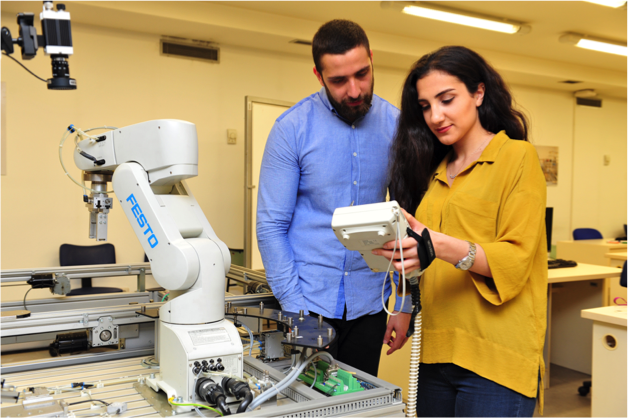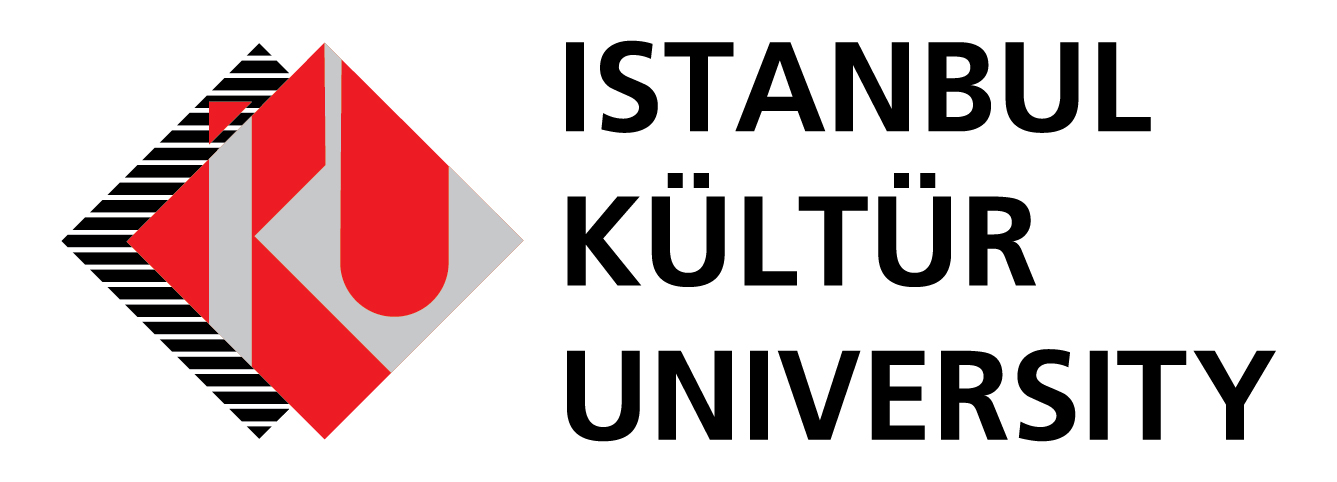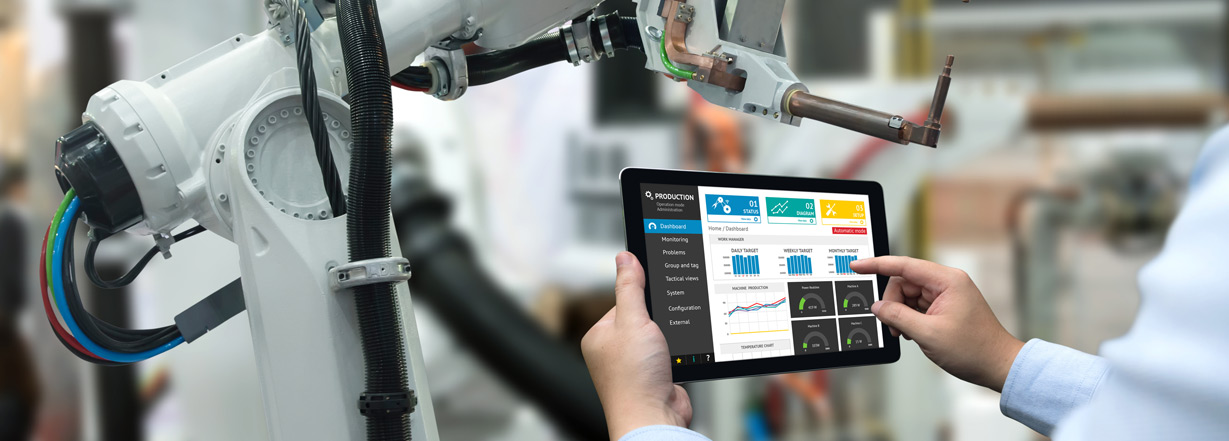The Production and Measurement Technologies Laboratory has four main functions. These include the management and inspection of Automatic Production Systems, the design of Automatic Production Systems by Simulation, the application of Measurement Techniques and the application of Ergonomic Measurements. There is a 20-person computer lab which is connected to institutional and internet networks, and departmental courses are held in this lab equipped with the DLP projection system. Our laboratory, which is currently being set up, now has the equipment to perform the first three functions. The hardware, software and equipment available in our laboratory for performing these functions are as follows:
 1. Automatic Production System
1. Automatic Production System
The system, which can be used in the planning, management and supervision of a production system, consists of seven elements..
1.1. Automated Storage System:
It is an automatic storage unit which carries out the loading and conveying functions of raw material, semi-finished and finished products with a 16 pallet capacity, and a three-axis Cartesian robot unit; it integrates the information of the transferred material with the database.
1.2. CNC Turning Lathe:
It is a horizontal (cylindrical part) processing station which can be controlled by CNC software that can run on a PC with asynchronous servomotor motion, 8 tool slot magazine, and X-48//Z-236 mm working area; it can perform coding, code calling of part operation codes and all controls related to the turning lathe with its additional keyboard compatible with the GE-Fanuc system.
1.3. CNC Milling Machine:
It is a vertical processing station which can be controlled by CNC software that can run on a PC with asynchronous servomotor motion, 8 tool slot magazine, 10 kg capacity, and X-190/Y-140/Z-260 mm working area; it can perform coding, code calling of part operation codes and all controls related to the turning lathe with its additional keyboard compatible with the GE-Fanuc system.
1.4. Robotic Loading and Intermediate Stock Station:
In addition to its function of loading/unloading parts on CNC milling machines and CNC lathe machines with its five-axis moving robotic arm on the three-meter linear X-axis, it carries parts from the conveyor to the intermediate stock area and from the intermediate stock magazine to the conveyor. There are also storage magazines for raw materials and semi-finished goods in the station.
1.5. Robotic Mounting Station:
The main components of this station are the six-axis robot arm, which performs assembly work, and the camera monitoring system which controls the orientation of the additional parts. The pallet magazine which allows parts to be stored in the intermediate storage area and the mounting table also has separate feeding magazines for additional parts (thermometer, hygrometer and items).
1.6. Automatic Transport System:
It is a closed cycle conveyor belt with a 1x3 m dimension, 5 m/min speed and 0.5 kg capacity per conveyor. The system has quadruple track loading and unloading points. The automatic transport system is a unit that connects all elements together with its own built-in power control unit. Moreover, it can be monitored by the system software to control the materials on the carrier.
1.7. SCADA System CIROS Production Hardware Interface:
It is a software that enables all hardware elements to be automatically operated, controlled, planned and inspected. The most important modules of the software are the interface software modules that control, monitor and manage all the data input/output information received from the elements in the system via ethernet connections and the database which stores the user records taken from the external environment.
2. CIROS Automatic Production Simulation:
It is a software package with 10 user licenses that enables the automated production system to be designed, managed, supervised and monitored in a simulation environment. This software package is brought into use in a computer lab with 10 PCs.
3. Measuring Equipment:
There are many equipment types of different precisions and ranges that provide depth, diameter, length and angle measurement to measure various sizes of produced parts and to check the conformity with desired measurements. These equipment types are grouped under the following categories:
Caliper:
It is a type of measuring tool with measurement precision of up to one tenth, twentieth and fiftieth of a mm; it is used for measuring length, outer diameter, inner diameter and depth. The following caliper types are available in our laboratory.
300 mm long mechanical caliper with 0.02 precision
200 mm long digital caliper with 0.01 precision
Micrometer:
It is a type of measuring tool with measurement precision of up to one percent of a mm, which makes the outer diameter, inner diameter and depth measuring functions more precise compared to calipers. The following micrometer types are available in our laboratory.
150 mm long analog micrometer with 0.01 precision
150 mm long digital micrometer with 0.001 precision
Comparator:
It is a type of depth measuring tool with a rotating pointer in the center of the dial and it measures by moving the dial gauge 1 mm up or down when the pointer, which is divided into 100 equal parts, makes a complete revolution. Our laboratory has the following comparator.
150 mm long analog comparator with and 0.02 precision
Protractor:
It is a type of measurement tool used for measuring the outer surface and the inner surface angles (0-360o). There is one universal protractor in our laboratory.


